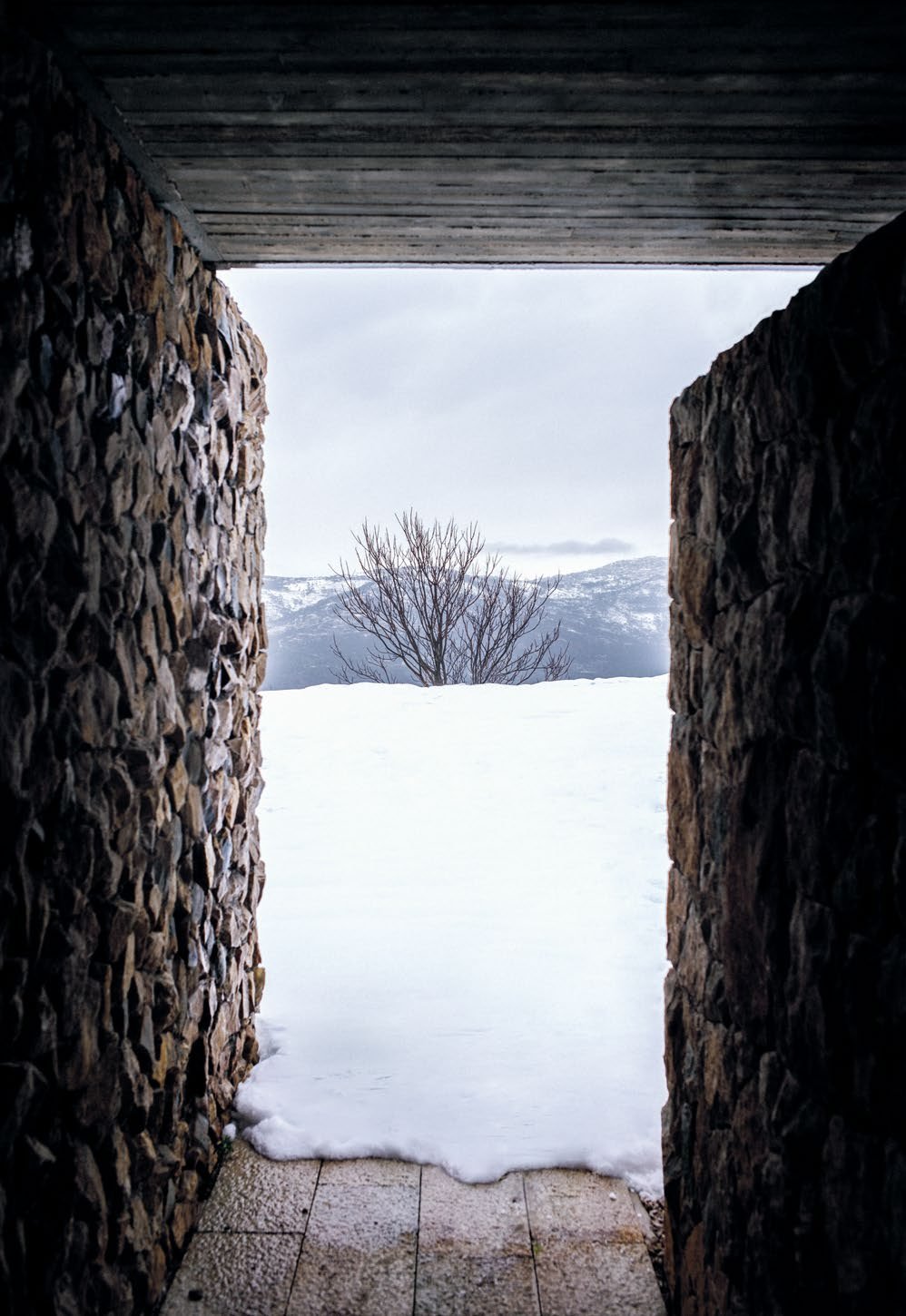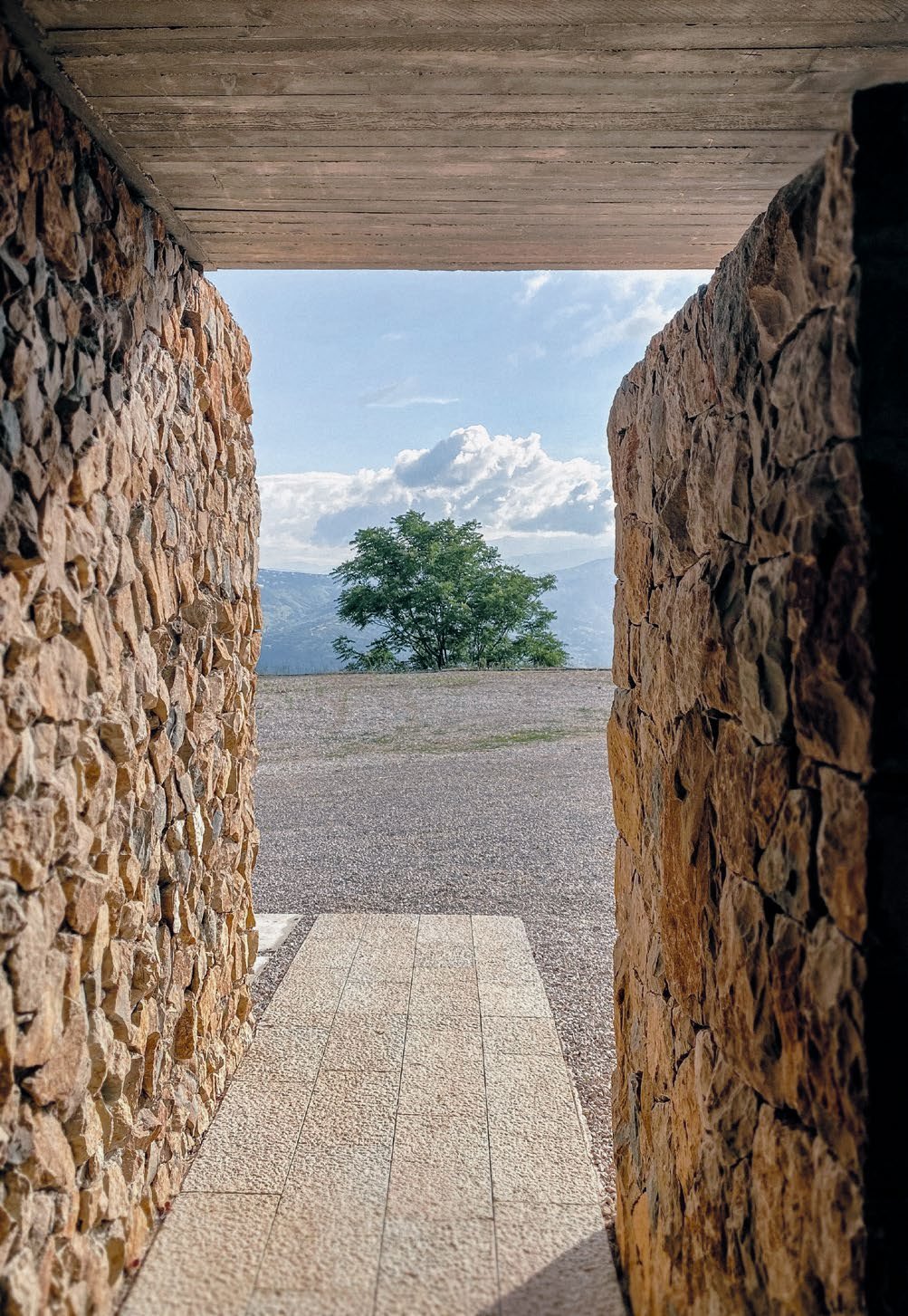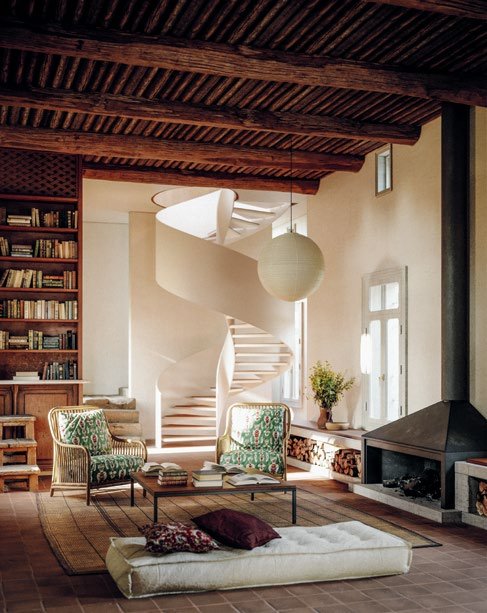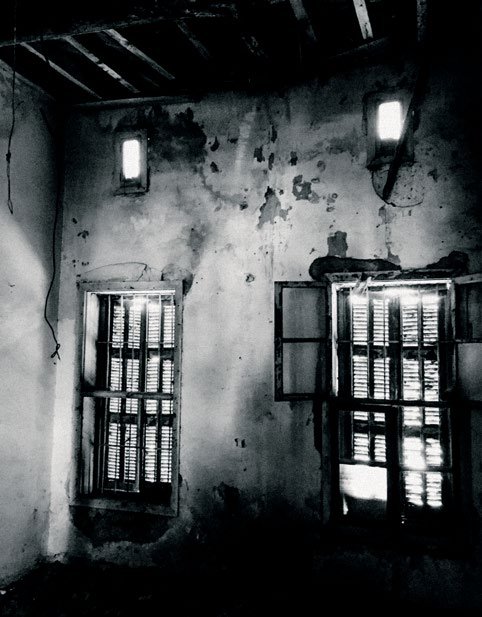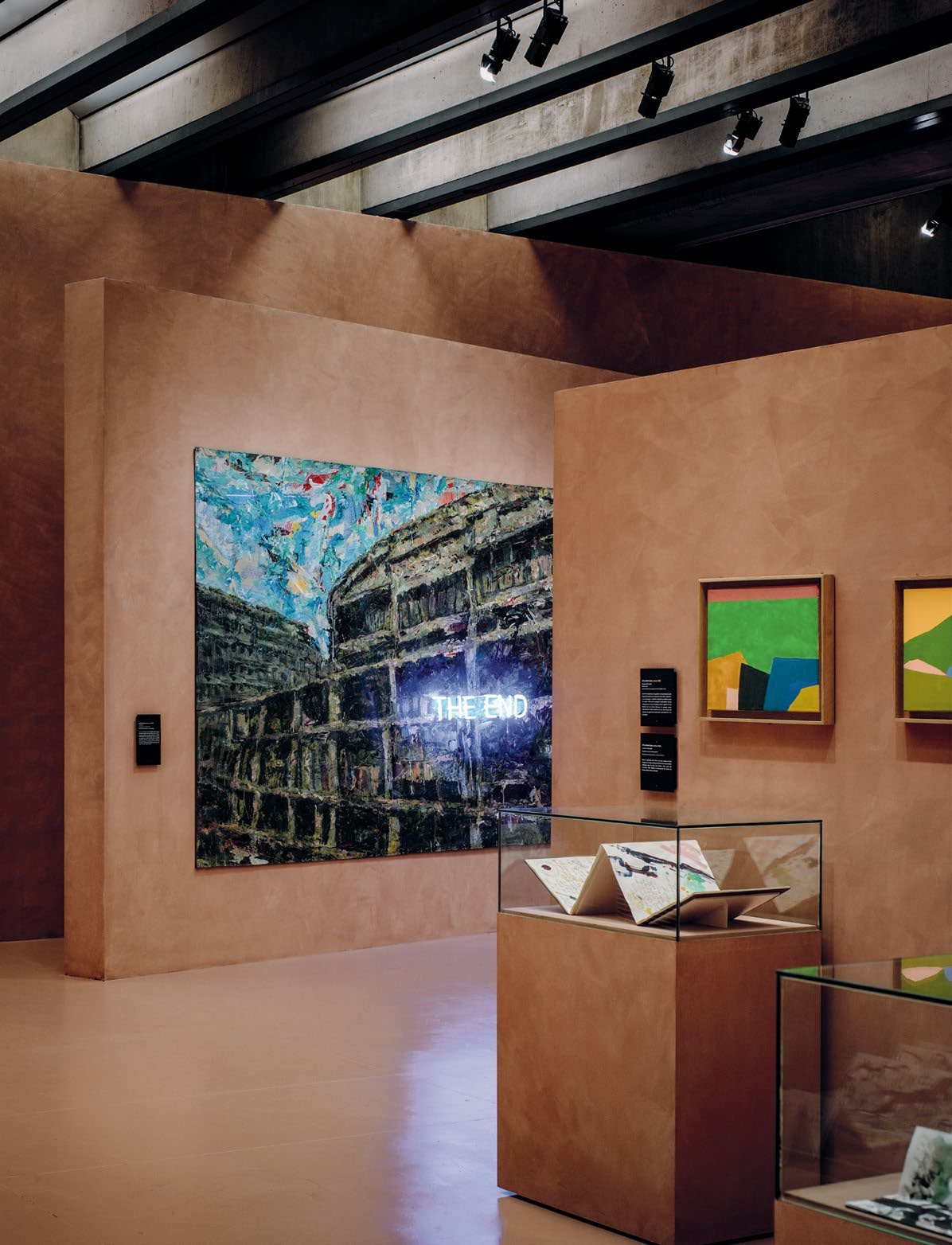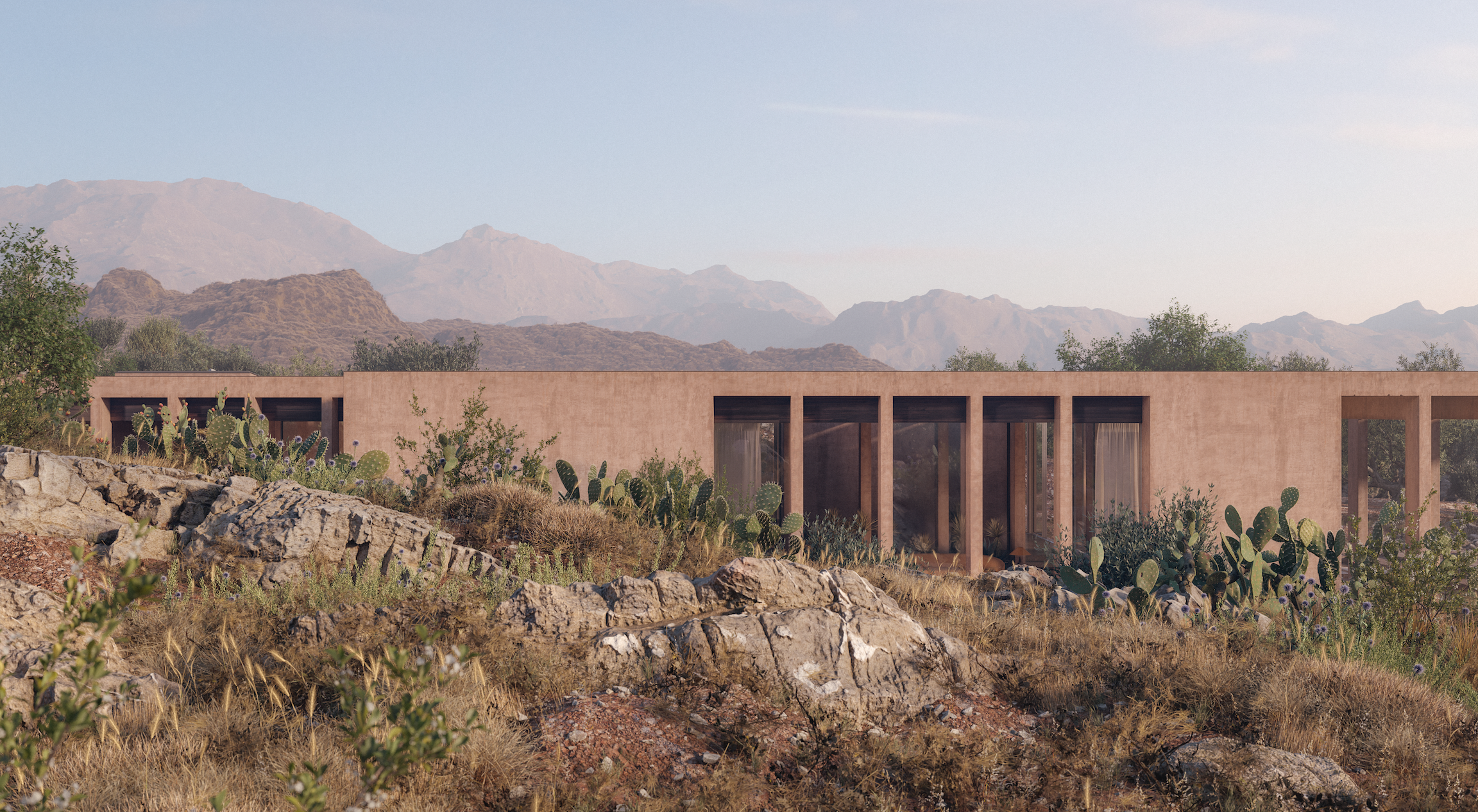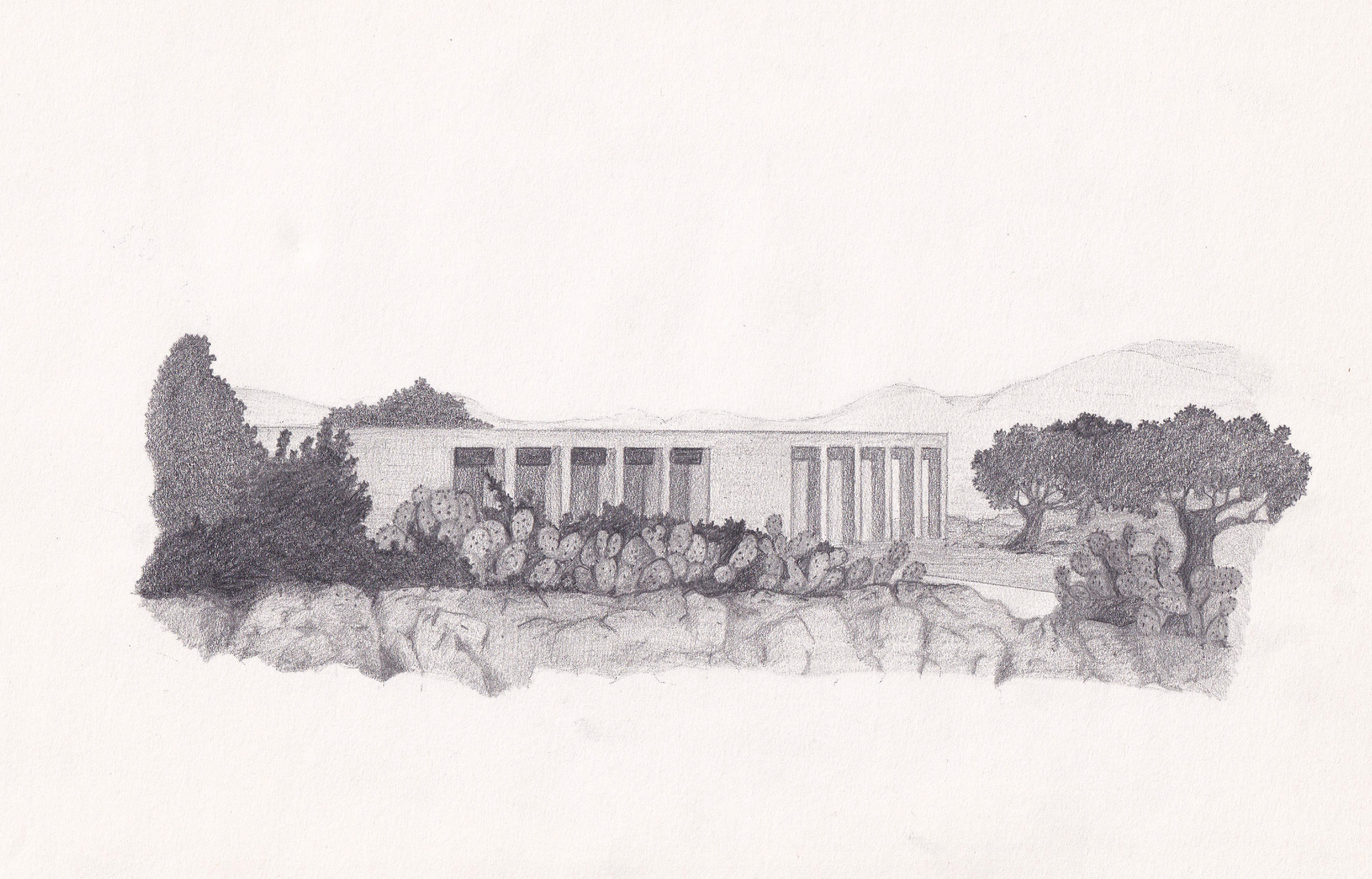Conversation with Carl Gerges
Creator of moments.
Words: Gilles Khoury. Photography and drawings: Carl Gerges Architects.
Cana Guesthouse, 250m2, Bhamdoun, Lebanon, 2020. Earth coloured walls and pivoting glass panels, merge the indoor with the outdoor.Drummer for the Lebanese band Mashrou’ Leila? Attention grabbing architect? Carl Gerges has no desire to choose. It’s exactly between these two intertwined worlds that he has carved out his own special place, where emotions, sensations, and nature form the driving forces of his work.
GILLES What were your first encounters with music and architecture, the two components of your career these days?
CARL As far back as I can remember, my parents always encouraged me to hone my musical skills, even though back then parents generally tried to steer their kids to more “classic” careers. My mother gave me my first drum kit when I was three years old. I used to make a hell of a racket, so they really had to put up with a lot! A bit later, while growing up in the 1990s, I was lucky to soak up the bands of that era, like The Scorpions and Metallica, as well as The Beatles, who remain a constant inspiration. What I’ve always found seductive and fascinating about them is their ability to transmit powerful emotions through simple three- or four-note melodies that grab onto us and don’t let go, and to transcend time without appearing to age. This is a lesson that I never forget. At the same time, architecture made its impression on me during early family trips, particularly to Paris. I was totally blown away by the buildings that went up during the industrial revolution, notably the Eiffel Tower, and spent hours staring at all the details – a sort of metallic lace that I found wholly captivating. So I began to build little models and to draw a lot. Drawing and architecture have always been inseparable to me.
La Frette Studios under the pencil of Carl Gerges, while recording, with Mashrou’ Leila, their fifth album, in Paris in 2015.G And you always start off your projects by making some sketches…
C That started during the period when I devoted myself entirely to making music with Masrou’ Leila. Between shows or after getting offstage, I would grab a pencil and piece of paper and draw the places where we had just been lucky enough to play while on tour. Those moments were vital to me because they carved out a moment of calm, a calm that was almost therapeutic, amidst the craziness and energy of performing. It was a bit like meditation, dissipating all the adrenaline built up during our concerts. Using those sketches, I made a sort of travel diary. Even now, every project I undertake begins with a drawing phase, during which I scribble on piles of white paper and then pull out the ones that will get digitally reproduced. Drawing is essential because it allows you to take a different angle, one with an added sensibility and a subjectivity that is often missing from photographs or computer software. And since I’m the nostalgic type, this approach brings me back in time to something slower, more artisanal, perhaps because the smells of pencils and magic markers conjure up my childhood.
G How did you make this transition from music – which you still perform with the group Mashrou’ Leila – to architecture, which is at the heart of your firm, Carl Gerges Architects?
C Even if I wasn’t fully conscious of it, music and architecture have always been inextricably intertwined during my life. These passions have always been connected, one way or another. So it wasn’t so much of a transition but a natural evolution. During my tours with Mashrou’ Leila, as I mentioned, we played in some amazing places, and during our downtime we would check out museums, archaeological sites, and private homes. Similarly, we’ve collaborated with the artist Oliver Beer, both at the Grand Palais and the Met Breuer in New York. So I have always had one foot in the world of architecture, and I was always very involved with the design of our stage sets. I wore two hats. Rather than trying to separate these disciplines, when I created Carl Gerges Architects, I naturally approached my projects in a theatrical way, as if they were a series of moments rather than a series of spaces.
Cana Guesthouse, 250m2, Bhamdoun, Lebanon, 2020. A look at the seasonal nature, towards the Lamartine Valley.G What seduces you in an architectural project?
C In order for a project to be exciting, the first thing it needs is a story that forms in my mind and solidifies into an experience. Then I construct these emotions, layer by layer. This is how I think as I layer materials, textures, and colours. I think of a project as an encounter, and encounters are composed essentially of sensations.
G Tell us about the importance you attach to light…
C Light is movement. Light makes the project visible. Having grown up in Beirut, where the light is truly special, I feel that no building can go up without taking this key element into consideration. That’s why the position of the sun plays an essential role in how I arrange the places I’m working on. Sometimes it even dictates the function of this or that space. Whether natural or artificial, the light is the beginning, the starting point, that reveals the materials and colours and even guides the way you interact with a space.
“Light is movement. Light makes the project visible. [...] no building can go up without taking this key element into consideration. ”
G What role does photography – one of your passions – play in the development and construction of your projects?
C If an architecture project is an encounter, then the photograph is the first impression – a glimpse that captures the space in a very particular way and gives it an extra dose of soul. I always insist on taking the photos of a site myself, before and especially after my work is executed. It’s my final moment with the space before I hand it over, and that creates a certain intimacy between us. And the photos also allow that – ephemeral – moment to live on.
G You are often described as an organic architect, insofar as nature is often a central element in your work. Do you recognize yourself in this description?
C Even though I have a very meticulous temperament, spontaneity is an indispensable element of any creative project. In architecture, nature lends an element of chance, and I always yield to it. In fact, I’m always telling myself that nature does its job so well that we should intervene as little as possible and simply see where it goes on a site so that the project will be successful. The real challenge is to build something incorporating the movements of nature and to help it along in some way.
Villa Nadia, 1.300m2, Beit Mery, Lebanon, 2020. A renovation project after 45 years of abandonment.G Artisanship is another thing that you care deeply about…
C My travels have also made me realize the richness that artisans contribute to their cities. Alas, many of these practices are destined to vanish. We need to save them and help them live on. Maybe that’s why I feel that artisanal techniques are a bit like the letters or fundamentals of my architectural language. A bit like a chef who explores spice markets in search of new flavours for his dishes, I absorb the work of artisans and draw inspiration from them for my projects. Every time I immerse myself in new techniques, such as Japanese wood arrangements, I try to adapt them and reinvent them in a way. This artisanal touch is what humanizes an architectural project.
Institut du Monde Arabe, Espace des donateurs, 1.200m2, Paris, France, 2021. This new space, refurbished by Carl Gerges, was inaugurated during the exhibition “Lights of Lebanon”, on September 21.G Speaking of humanity, what has it been like to move from the stage – where you’re both in a bubble and saturated with media coverage – to something more real and material?
C Before, when I was only involved with music and Mashrou’ Leila, I felt like I was constantly barricaded and surrounded by noise. I felt distant from other people, cut off by managers, agents and protocols that sucked the “realness” out of my life. These days, the human dimension has rediscovered its place in my life, whether through talking to clients or with artisans. I feel like I’m more rooted in the cities where I’m just passing through, simply because my projects are conversations with those places, conversations that extend into time and into space. In fact, it feels like things have flipped around between my life as a drummer in Mashrou’ Leila and my life as an architect today. Before, the dream came from being onstage, from the energy of the crowds, from traveling. I counterbalanced that with quiet time, like drawing and taking photos. Today it’s the opposite. My business keeps me sedentary. But I take off and fly through the music.
Villa Chams, Façade Nord, 700m2, Baalbek, Lebanon, 2020. The Romans chose this place to honour their gods, setting up Heliopolis, a city dedicated to the sun. The “sun” house was dug in the rock, like the cave constructions.Sketch of the Villa Chams, made by Carl Gerges in his architecture studio in 2018.


